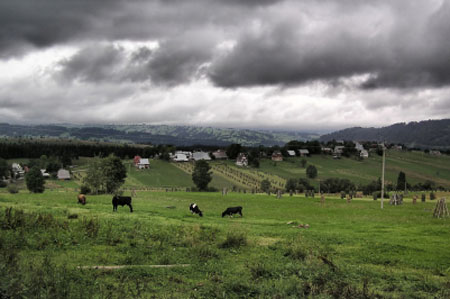 (AgWeb) – Don’t say goodbye to El Nino just yet.
(AgWeb) – Don’t say goodbye to El Nino just yet.
Recent tropical cyclone activity in the Pacific Ocean has produced strong westerly winds along the equator, which may temporarily slow El Nino’s decline, Australia’s Bureau of Meteorology said Tuesday on its website. The event is still expected to decay over coming months, with a return to neutral conditions expected in the second quarter, it said.
The current El Nino is rated as one of the three strongest since 1950 and has hampered cocoa crops in Ivory Coast, reduced monsoon rainfall in India and curbed rice production in Thailand. While the weather condition may strengthen temporarily, ocean temperatures in the tropical Pacific have been cooling since November and the bureau said earlier this month that the event has peaked.
“Short-term re-intensification of El Nino has happened before,” the bureau said. The record 1997–98 event “saw a re-strengthening of El Nino conditions in early 1998, before the event eventually decayed,” it said.
Even as El Nino wanes, its effects are being felt. Indonesia’s coffee production will probably drop 20 percent due to El Nino-linked dry weather, according to the median of estimates from six traders and analysts compiled by Bloomberg. Malaysian palm oil output may drop 10 percent this year, Plantation Industries and Commodities Minister Douglas Uggah Embas said Tuesday.
La Nina
“A strong El Nino persists, but ocean temperatures in the tropical Pacific are showing a gradual cooling signal,” the Bureau of Meteorology said. The eastern tropical Pacific sub-surface has cooled by as much as 3 degrees Celsius since late November and weekly sea-surfacetemperatures have also cooled, it said.
Farmers, traders and governments are now monitoring for La Nina, a cooling in the equatorial Pacific Ocean that is sometimes thought of as El Nino’s opposite. Based on the 26 El Nino events since 1900, about 50 percent have been followed by a neutral year with 40 percent by La Nina, Australia’s weather bureau said.
The Australian bureau says models indicate neutral and La Nina states are about equally likely for the second half, with a repeat of El Nino the least likely outcome. Indonesia said this month that it forecasts La Nina to occur in October.
Just as El Nino can roil agricultural markets worldwide, so can its counterpart. A large part of the agricultural U.S. tends to dry out during La Nina events, while parts of Australia and Indonesia can be wetter than normal. The previous La Nina began in 2010 and endured into 2012.




